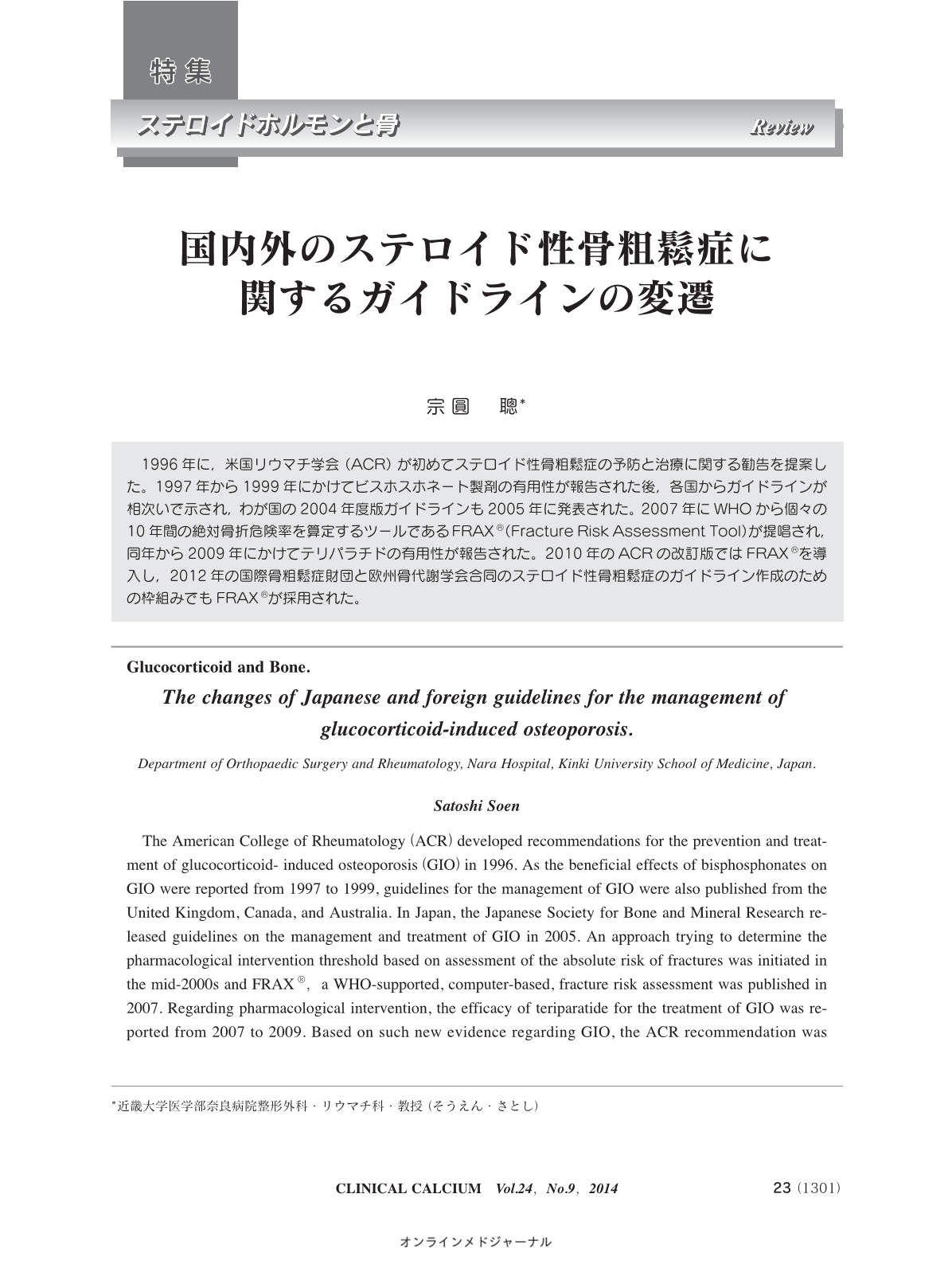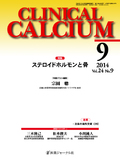Japanese
English
- 有料閲覧
- Abstract 文献概要
- 1ページ目 Look Inside
- 参考文献 Reference
1996年に,米国リウマチ学会(ACR)が初めてステロイド性骨粗鬆症の予防と治療に関する勧告を提案した。1997年から1999年にかけてビスホスホネート製剤の有用性が報告された後,各国からガイドラインが相次いで示され,わが国の2004年度版ガイドラインも2005年に発表された。2007年にWHOから個々の10年間の絶対骨折危険率を算定するツールであるFRAX®(Fracture Risk Assessment Tool)が提唱され,同年から2009年にかけてテリパラチドの有用性が報告された。2010年のACRの改訂版ではFRAX®を導入し,2012年の国際骨粗鬆症財団と欧州骨代謝学会合同のステロイド性骨粗鬆症のガイドライン作成のための枠組みでもFRAX®が採用された。
The American College of Rheumatology(ACR)developed recommendations for the prevention and treatment of glucocorticoid- induced osteoporosis(GIO)in 1996. As the beneficial effects of bisphosphonates on GIO were reported from 1997 to 1999, guidelines for the management of GIO were also published from the United Kingdom, Canada, and Australia. In Japan, the Japanese Society for Bone and Mineral Research released guidelines on the management and treatment of GIO in 2005. An approach trying to determine the pharmacological intervention threshold based on assessment of the absolute risk of fractures was initiated in the mid-2000s and FRAX®,a WHO-supported, computer-based, fracture risk assessment was published in 2007. Regarding pharmacological intervention, the efficacy of teriparatide for the treatment of GIO was reported from 2007 to 2009. Based on such new evidence regarding GIO, the ACR recommendation was updated to incorporate FRAX® as an assessment tool for fracture risk in the 2010 revision. The Joint GIO Guidelines Working Group of the International Osteoporosis Foundation and the European Calcified Tissue Society has also published a framework for the development of guidelines for the management of GIO.



